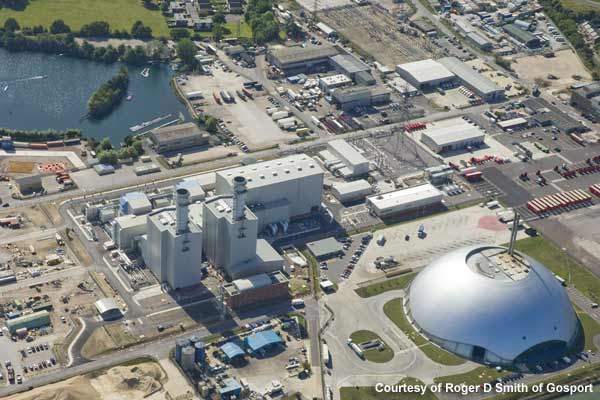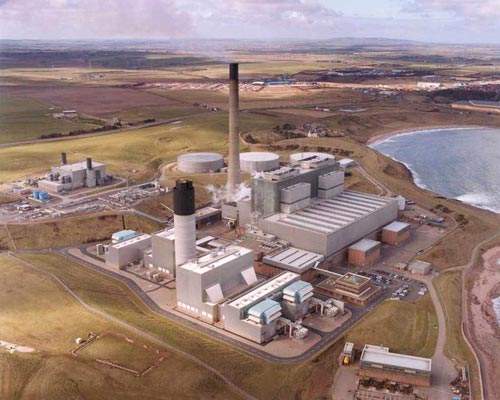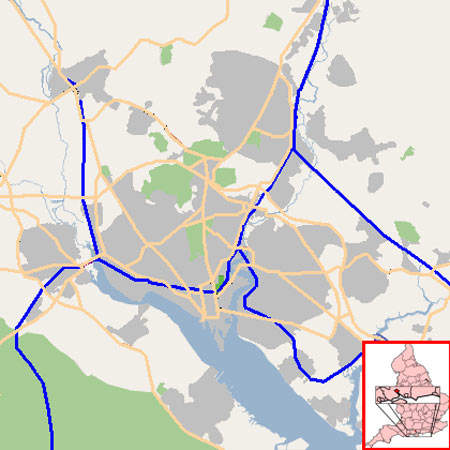Marchwood Power Station (MPS) is a combined-cycle gaseous turbine (CCGT) power plant located at Marchwood Industrial Park in Southampton, UK. MPS has an installed capacity of 842MW and was developed by Marchwood Power (Marchwood).
Marchwood is a joint venture between ESB International (ESBI) and Scottish & Southern Energy (SSE). The construction began after Marchwood received the necessary permissions from federal and local government agencies to construct and operate the power plant. The permissions were granted following a comprehensive environmental impact assessment of the power station.
The construction of the power station began in 2007 and the plant started operating in December 2009. However, it officially opened in January 2010. The project cost £380m.
Marchwood power plant details
The project includes a power station and two chimney stacks. The power station is equipped with two gaseous turbines, one steam turbine and electric generators with heat-recovery steam generators, for the generation of power.
The plant was constructed at the former power station site, which has been unused since the 1980s. The site was considered to be ideal as it involved re-using a brownfield area rather than development of a greenfield site, and was also the source for local skilled labour employment during construction. In addition, the site provided access to the existing infrastructure of the previous power station.
A small area is occupied by the power station as the combined-cycle power plants are smaller in size compared with conventional thermal power plants.
The natural gas required by the plant for the generation of electricity will be supplied by SSE. SSE will also consume the power generated by the station for the first 15 years of the plant’s operations.
MPS construction
The construction of the power plant was carried out under an engineering, procurement and construction (EPC) contract by a consortium formed by Siemens plc and Siemens AG. The power station was constructed on the site of a former power plant by utilising the existing energy infrastructure.
The work included the construction of the MPS and an underground gas pipeline that connects the power station to Lockerley, the national gas transmission network of England. The 23.5km pipeline was built via farmland, the M27 road and the rail network.
The installation of gas turbines, a steam turbine, generators and auxiliary equipment at the plant was carried out by Siemens.
The utmost measures were considered during construction in order to minimise the impact of work on the community. Best construction and safety management practices were also incorporated.
Combined-cycle gas turbine (CCGT) technology
The plant incorporates CCGT technology for the generation of the power. CCGT advanced generating technology is energy efficient and produces low emissions. The plant will operate at an efficiency of about 58%. The former power station was operated at fuel efficiency between 30-35%.
Natural gas – the fuel used by the power plant – is combusted in the combustion chamber of the gas turbines installed. The burnt fuel will generate hot combustion gases that drive the turbines, which in turn drive the generators to produce electricity.
The hot gases exhausted from the gas turbine will be transferred to the waste heat recovery boilers to generate steam. The high-pressure steam generated drives the steam turbine installed in the power station. The steam turbine generates additional electricity and thereby increases the efficiency of the power plant.
The steam that leaves the turbine will be condensed and further transferred to the waste heat recovery boilers for reuse.
Water – which acts as a coolant for the power plant – will be drawn from the test river via the intake structure that exists at the former power station. The used water will be transferred back to the river by maintaining the quality and temperature constraints that meet environmental legislation requirements.
Marchwood environmental considerations
Marchwood has worked with government and environmental bodies to ensure it meets standards of health, safety and care for the natural environment in the area surrounded by the plant.
The studies, including flora, fauna, landscape, traffic, noise and socioeconomic effects of the project on the environment, were approved by environmental authorities.
An environmental management system has been installed in the power plant to detect environmental issues such as noise, emissions and discharges.






